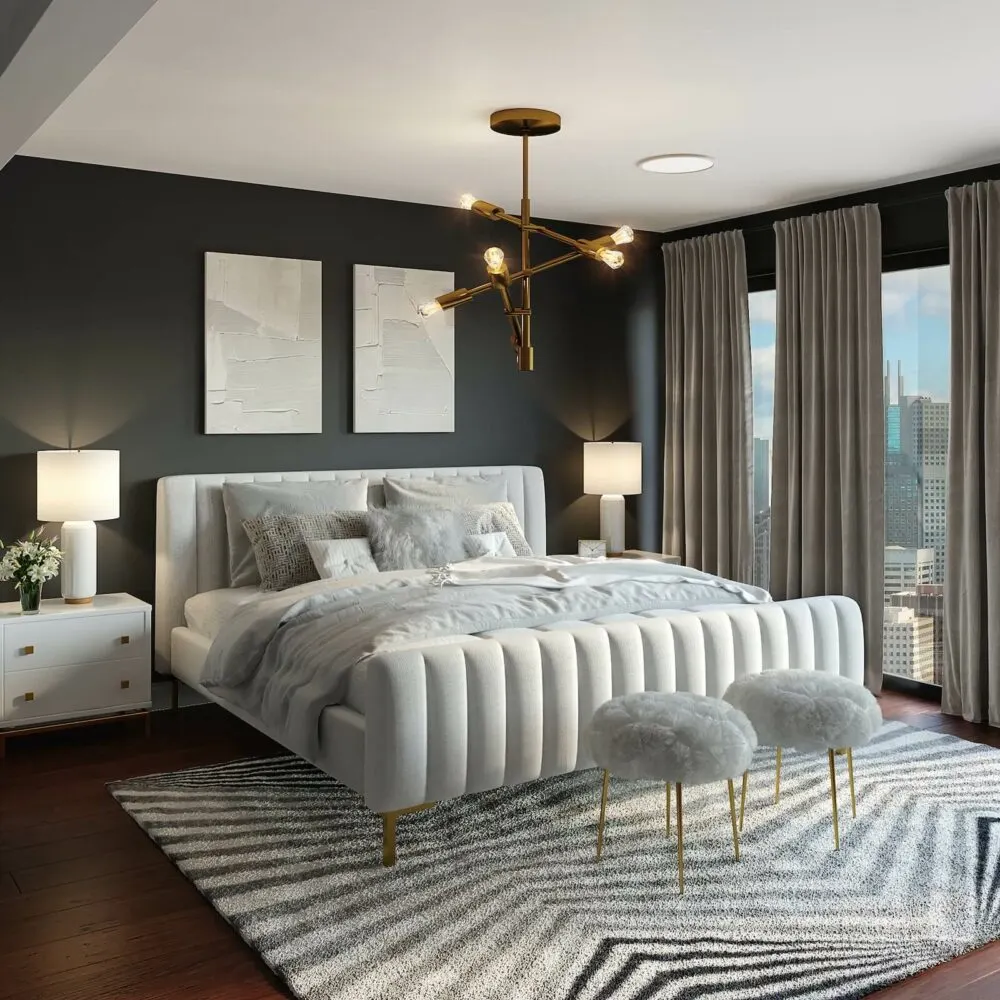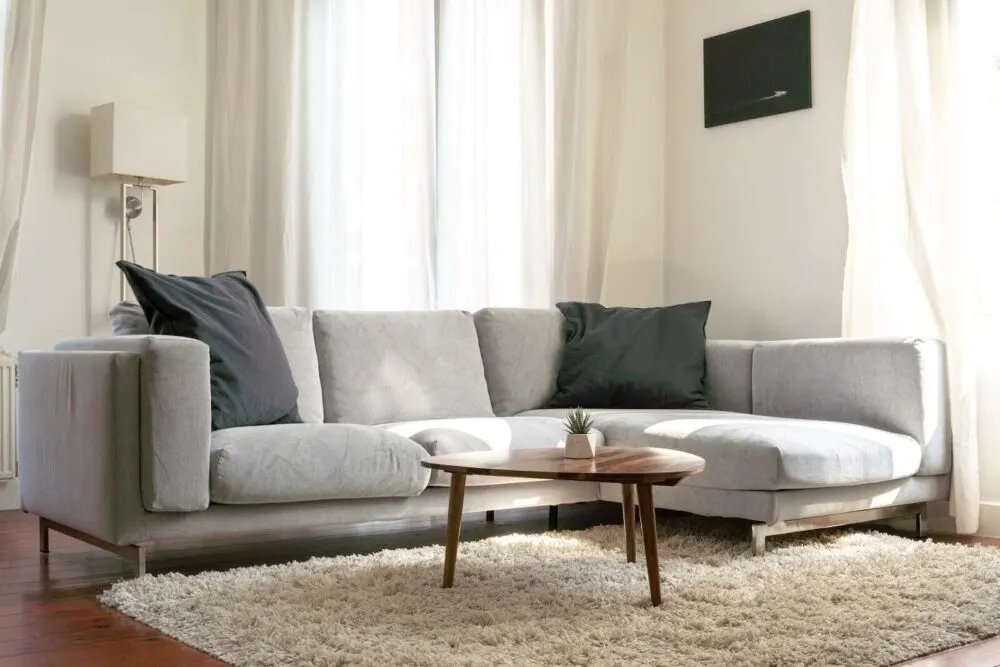Do you have a new home or office, and the echo drives you crazy? The echo can make it difficult to hold a conversation or watch TV. It’s annoying and frustrating. If you’re asking yourself, “How to reduce echo in a room?” keep reading.
Luckily, there are ways to reduce echo without spending a fortune. This blog post will cover 8 ways to reduce echo in your room using everyday items. Let’s get started!
Why do large/empty rooms have an echo?
Echo is created by sound waves bouncing off of hard surfaces. The larger the room, the longer it takes for the sound waves to bounce back, so you often hear an echo in large rooms.
As for empty rooms, there are no soft surfaces for the sound waves to bounce off, which is why you hear a very pronounced echo.
Which materials are suitable to avoid echo?
Hard surfaces create an echo. This means that you want to avoid materials such as concrete, tile, and hardwood floors. Instead, opt for carpets or rugs. You also want to avoid bare walls and add soft furnishings such as curtains or tapestries.
Soft and porous materials are also good at absorbing sound, so you often see acoustic panels in recording studios. Membranes and resonance absorbers are also good at reducing echo, but they are more expensive than the other options on this list.
Ultimately, unless you’re decorating a recording studio, you want to focus on adding soft furnishings and covering hard surfaces.
8 ways to reduce echo in a room
Here are eight ways to reduce echo in your room:
1. Cover the windows
One of the simplest ways to reduce echo is to cover the windows. You can do this with curtains, blinds, or even sheets.

Avoid metal/plastic blinds and use heavy fabric curtains if possible. Windows are often the biggest offender when it comes to echo, and you don’t want to leave them open for privacy reasons.
2. Cover the floor
Once you’ve dealt with the windows, it’s time to cover the floor. If you have hardwood floors, consider investing in a large rug. Not only will it reduce echo, but it will also add some warmth to the room.

Carpets are also a good option for reducing echo. Avoid tile and concrete floors if possible, as they amplify sound rather than reduce it. If you can’t afford to replace your flooring, try placing an area rug in the center of the room.
If the room is big, you may need more than one rug to achieve the desired effect.
3. Cover the walls
As exaggerated as this might sound, covering the walls can help reduce echo. This is because sound waves bounce off hard surfaces, and by covering the walls, you give the sound waves something soft to bounce off.

There are a few different simple ways you can cover your walls:
- Hang tapestries or blankets
- Add pictures or posters
- Place furniture against the wall
All of these options will help reduce echo in your room. Remember that you don’t want to cover every wall as this will make the room feel smaller. Instead, focus on strategic placement and use your best judgment.
4. Add bookshelves
We mentioned placing furniture against the walls and bookshelves is a great option to reduce echo and add storage. Bookshelves cause reverb which helps to reduce echo.
Not only that, but they also add a lot of character to a room. Consider adding a few bookshelves to your room if you have the space. You can never have too much storage!
Paper also helps reduce echo, and bookshelves filled with books are an excellent way to achieve this. Once again, be strategic with your placement, and don’t overcrowd the room.
If you don’t have enough room for traditional bookshelves, try floating or ladder shelves. These will still provide the same benefit without taking up as much space. If you don’t want to commit to bookshelves, try placing a cabinet or dresser against the wall. This will also help reduce echo while giving you extra storage.
5. Add cushy furniture
This one is self-explanatory, but adding cushy furniture will help reduce echo. Sofas, chairs, and ottomans are all great options.
Not only will they help reduce echo, but they’ll also make the room more inviting and comfortable. If you have the space, add some comfy furniture to your room.

Adding cushions or blankets to your furniture will also help reduce echo. If you don’t want to buy new furniture, try placing pillows on your existing furniture—a great way to add comfort and style to your room without breaking the bank.
6. Add more plants!
Plants add a lot of life to a room and help reduce echo. This is because plants absorb sound waves, which help to reduce the overall noise in the room.
If you’re looking for a simple way to reduce echo, adding more plants is a great option. Not only will they help with the acoustics, but they’ll also purify the air and add some color to the room.
Win-win!

You can place your new plants on the bookshelves we discussed earlier or anywhere else in the room. Just be sure to water them regularly and give them enough sunlight.
You can never have too many plants!
7. Install acoustic panels if you need a professional setup
Acoustic panels are a great way to reduce echo in a room, but they can be expensive. Acoustic panels are the way to go if you want a more permanent solution.
These panels absorb sound and work wonders in large rooms with high ceilings. If you have the budget, we recommend hiring a professional to install them.
Often, you will see YouTubers, streamers, and podcasters with these installed in their home studios, along with windscreens or pop filters.
While acoustic panels are an effective way to reduce echo, they’re not always necessary. If you have a smaller room or lower ceilings, you might be able to get away with some of the other methods on this list.
It’s important to note that acoustic panels should be your last resort, as they can be expensive and difficult to install. If you’re looking for a cheaper and easier solution, we recommend trying one of the other methods on this list first.
That being said, acoustic panels are the way to go if you have the budget and need a professional setup.
8. Cover the ceiling
As crazy as it sounds, covering the ceiling can help reduce echo in a room. By covering the ceiling, you’re absorbing the sound waves and reducing the overall noise in the room.
There are a few different ways you can cover the ceiling. One option is to add moldings or light fixtures. These will not only help reduce echo but also add some character to your room.
Another option is to cover the ceiling with fabric. This is a cheap and easy way to reduce echo without changing your room permanently.
Reducing the ceiling height is also an effective way to reduce echo. This is because sound waves have more difficulty bouncing off shorter ceilings. However, most people won’t want to lower their ceilings as it’s expensive permanently and makes the room feel more cramped.
Adding a texture to the ceiling is a great way to reduce echo without making permanent changes or downsizing your living space.
The bottom line: How to reduce echo in a room?
There you have it! These are eight ways to stop echo in a room without breaking the bank. By following these tips, you’ll be able to create a more comfortable and inviting space that’s free of annoying echoes. Do you have any other suggestions for reducing echo? Let us know in the comments below!